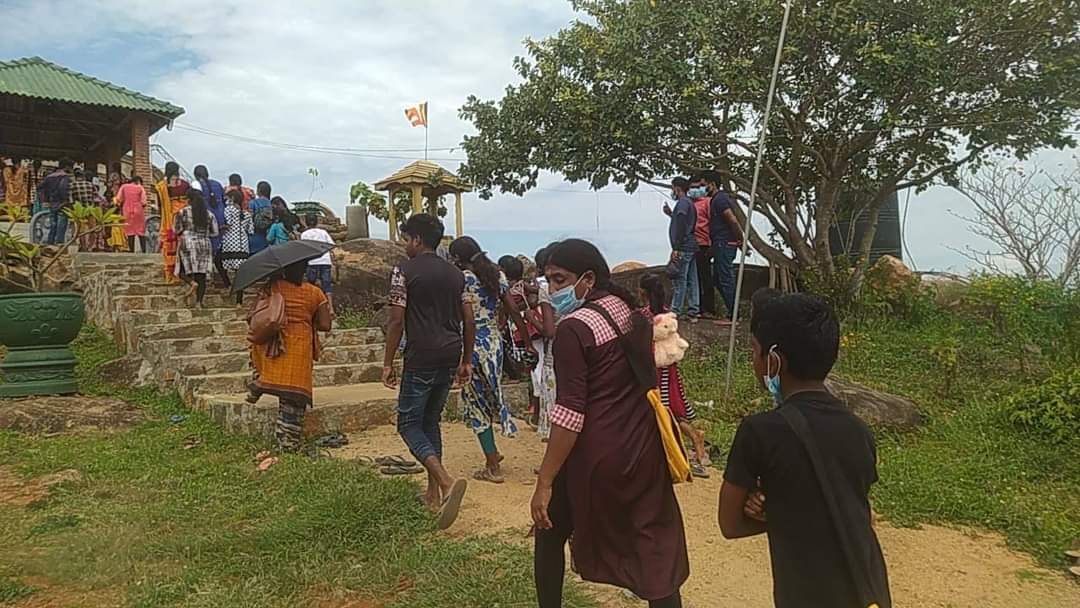
A Sinhala Buddhist monk, alongside Sri Lanka police officers, reportedly attempted to block Saiva Tamil worshippers and priests from visiting the historic Rajavanthan shrine in Muthur, Trincomalee over the weekend.
Although the monk threatened and hurled racist abuse at the worshippers, they defiantly visited the Hindu Rajavanthan shrine whilst Sri Lankan police and intelligence personnel took photographs of the worshippers.

Saiva Tamils have been visiting the Rajavanthan shrine and Maanikka Pillaiyar temple at the foot of the hill as pilgrimage sites for decades. However, three years ago, these sites were destroyed and replaced with Buddhist symbols and flags.
In People for Equality and Relief in Lanka's (PEARL) recent report 'State-sponsored Sinhalisation of the North-East', the advocacy organisation highlights that "the erection of Buddhist viharas in areas that are not historically Sinhalese and the destruction of Tamil places of worship are not new." Over 500 Hindu temples in the North-East were destroyed by the during the armed conflict.

"The GoSL is actively engaged in the construction of a Buddhist landscape throughout the North-East. The GoSL encourages Buddhism and its places of worship to take precedence over other religions on the island," the report adds.
"The governance, management and use of 'heritage lands' are at the heart of many intergroup tensions in Sri Lanka. While the GoSL has designated several bodies to oversee the designation, use, and protection of such lands, these mechanisms are largely headed and captured by Sinhalese-Buddhist interests, with little representation or consultation with Tamil and minority groups. As a result, Tamils and Muslims in the Northern and Eastern Provinces have been systematically marginalized while their religious sites are co-opted or destroyed," PEARL' highlights in their report.
The Tamil homeland has been under intense Sinhalisation for decades but in recent years, there has been a rise in the 'rediscoveries' of Sinhala Buddhist sites by Sri Lanka's Department of Archaeology as a well as land settlement and development policies to alter the demographics of the North-East.
